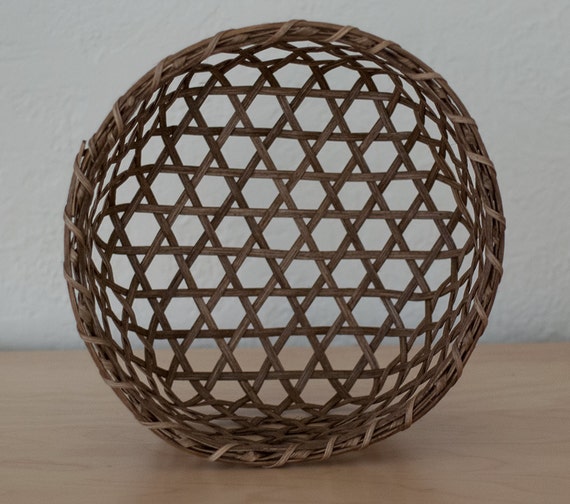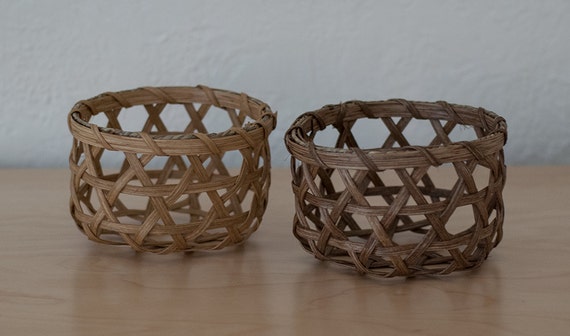Back-story aside, the main purpose of this post is to give you a glimpse into the basket creation process, and the basket I'm using to show the basic stages of that process is the basket behind the shop banner. There are basically 6 stages that every basket goes through, from the moment I sit down to sketch it out to when I stain and finish it.
Stage 1: Design & Material Prep
I knew I wanted to make a market basket in the traditional style, and I knew it had to be twill. I also remembered that I had an ash handle with an 8" spread lying around (decisions about basket design are often made based on the materials I have on-hand!). After I dug up the handle I got started calculating the dimensions for an 8" wide market basket.
The finished rim measurements of a basket are always a bit larger than the dimensions of the base, so I calculated how many 1/4" stakes I would need to make a 6x10" rectangular base (about 18x28). The final step in this stage was to get out my materials and cut the reed I would need to weave the base. If I was making a basket with colored reed, dying the reed would be an additional part of the material prep.
Stage 2: Weaving the Base & Locking Row
The base was woven in a 2x2 twill pattern, which gives the basket a very solid, filled bottom. When the base was finished, I twined a quick locking row to ensure that the base stayed rectangular. Especially with twill bases, the corners like to slip, and this row prevents that. You can see the locking row in the second picture below.
Stage 3: Weaving the Walls
The walls were woven in the same 2x2 twill pattern. It took about 16 rows to get to the height I was aiming for; it's more important for the proportions to feel right than to have any exact ratio, unless you're working with a repeating pattern.
I always stop after the first few rows and let them dry before continuing, because the first few rows are always a bit uneven and I like to pack them down before weaving the rest of the walls. Reed shrinks a bit when it dries, so it's a good idea to let the basket dry before packing the rows to remove any gaps or unevenness.
Stage 4: Cut & Tuck
This stage is pretty self-explanatory: stakes that end up on the inside of the basket get cut while stakes on the outside get tucked over to secure the top row in place.
Stage 5: Lashing the Rim
Rimming the basket can be very time-consuming, depending on the size of the basket. This one took about an hour to rim. The first step is to cut the rim pieces; for this one, I used 3/8" flat oval reed. The pieces are cut with about 1" of overlap; then those end pieces get shaved down so that the overlapping section is the same thickness as the rest of the rim.
Stage 6: Staining
To create a traditional finish for the basket, I stained it a dark walnut brown with standard wood stain. This color imitates the look of early American baskets made from brown ash splint, which darkens with age.
 |
| The finished basket! |
That's it! From start to finish, it took about 6.5 hours to make this basket, and since my goal is to create both beautiful and functional baskets, I pay close attention to detail at every stage so that all my baskets are made to the highest standards!









